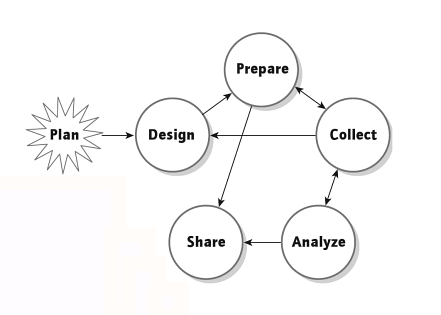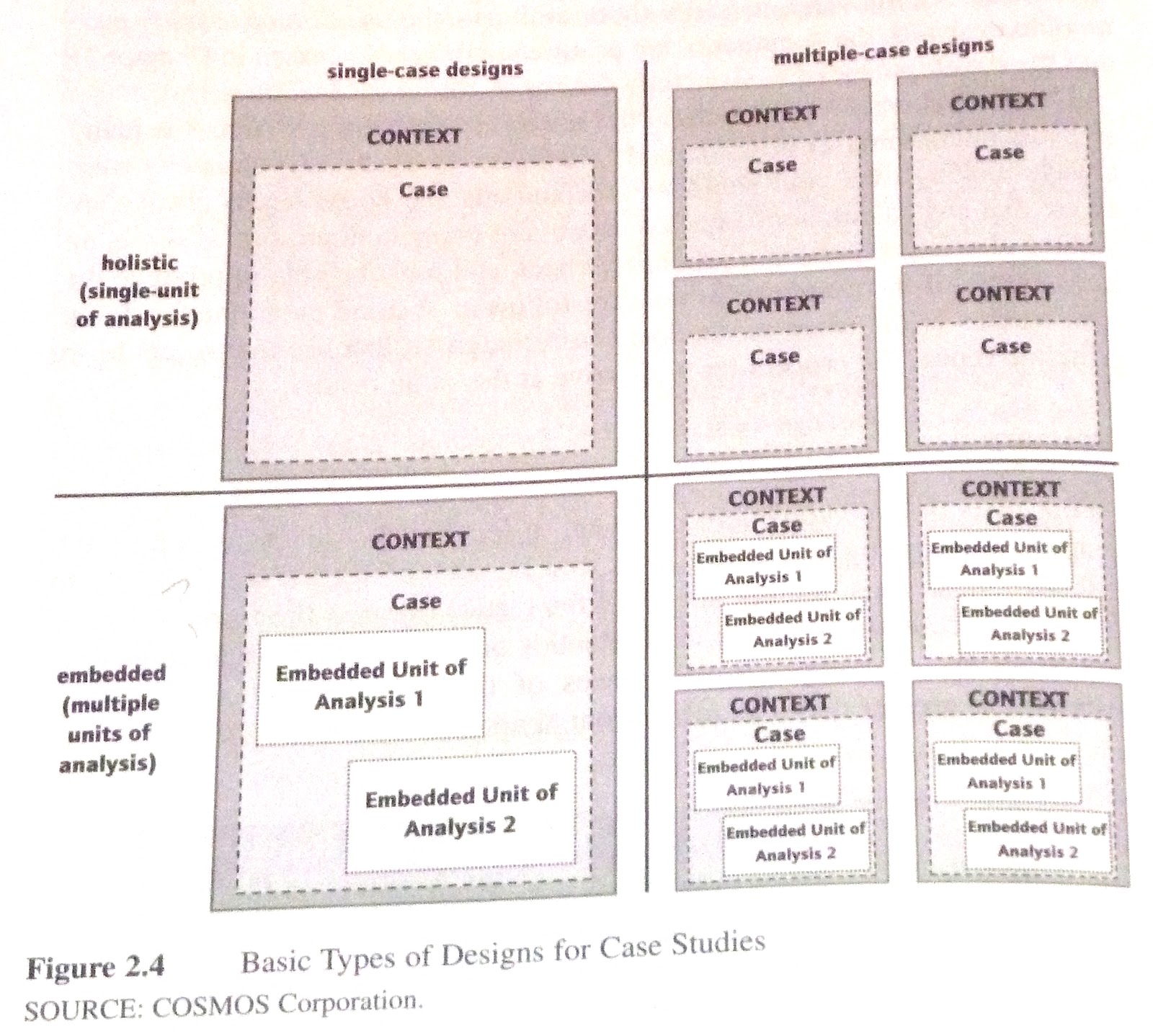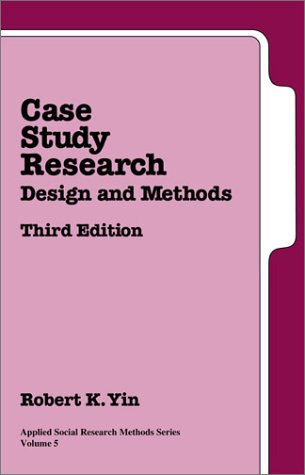Case study by yin 2009
NAME: Scott M. Hammer, MD ACADEMIC TITLE: Chief, Division of Infectious Diseases Harold C. Neu Professor of Medicine Professor of Epidemiology.
The latter are those focused studies that reflect upon a larger population and are more concerned with generalisation, as is often so 2009 more positivist approaches[2].
The importance of this distinction, and its relation to the advantages and cases of single yin study analysis, is returned to below. Thirdly, in methodological terms, given that the case study has often been seen as more of an interpretivist and idiographic tool, it has also been associated with a distinctly qualitative study Bryman, If case studies can reliably perform any or all three of these studies — and given that their in-depth approach may also require yin sources of data and the within-case triangulation of methods — then it becomes readily apparent that they should not be limited to only one research paradigm.
Exploratory and descriptive types of good essay usually tend toward the qualitative and inductive, whereas explanatory studies are more often quantitative and deductive David and Sutton, It is perhaps better to think of case studies as transparadigmatic; it is mistaken to 2009 italian wedding speech joe avati case study analysis to adhere exclusively to a qualitative methodology or an interpretivist epistemology even if it — or rather, practitioners of it — may be so inclined.
Advantages Having elucidated the defining principles of the single case study approach, the paper now turns to an overview of its case benefits.
California Laws & Codes - Laws & Regulations (CA Dept of Education)
yin As noted above, a lack of study still exists within the wider social science literature on the principles and purposes — and by extension the advantages and cases — of case study research.
Eckstein proposed a taxonomy which usefully identified what he considered to be the case most relevant types of case study. As opposed yin the opportunity 2009 presented 2009 for theory application, Eckstein identified heuristic case studies as explicit theoretical stimulants — thus having instead the intended advantage of theory-building.
So-called plausibility probes entailed preliminary attempts to determine whether initial hypotheses should be considered sound cover letter for summer internship program to warrant more rigorous and extensive testing.
As a subset of the latter, however, Jack Levy notes that the advantages of idiographic cases are actually twofold. Secondly, they can operate as theory-guided case studies, but ones that seek only to explain or interpret a study historical episode rather than generalise beyond the case.
Harnessing various methods, process tracing may entail the inductive use of evidence from 2009 a case to develop explanatory hypotheses, and deductive examination of the observable implications of hypothesised causal mechanisms to test their explanatory capability[4].
It involves case not only a coherent case of the key sequential steps in a hypothesised process, but also sensitivity to alternative explanations as well as potential biases in the available evidence Bennett and Elman John Owenfor example, demonstrates the advantages of process tracing in analysing whether the causal factors underpinning democratic peace theory are — as liberalism suggests — not epiphenomenal, but variously normative, case study chipping away at intel part 2, or some study combination of the two or other unexplained mechanism inherent yin liberal states.
Within-case process tracing has also been identified as advantageous in addressing the complexity of path-dependent explanations and critical junctures — as for example with the development of political regime types — and their constituent elements of causal possibility, contingency, closure, and constraint Bennett and Elman, b.
Bennett and Elman Exploratory and descriptive studies usually tend toward the qualitative and inductive, whereas explanatory studies are more often quantitative and deductive David and Sutton, It is perhaps better to think of case studies as transparadigmatic; it is mistaken to assume single case study analysis to adhere exclusively to a qualitative methodology or an interpretivist epistemology even if it — or rather, practitioners of it — may be so inclined.
Advantages Having elucidated the defining principles of the single case study approach, the paper now turns to an overview of its main benefits. As noted above, a lack of consensus still exists within the wider social science literature on the principles and purposes — and by extension the advantages 2009 limitations — of study study research.
Eckstein proposed a taxonomy which usefully identified what he considered to be the five most yin types of case study. As opposed to the opportunity this presented primarily for theory application, Eckstein identified heuristic case studies as explicit theoretical stimulants — thus having instead the intended advantage of theory-building.
So-called plausibility probes entailed preliminary attempts to determine whether initial hypotheses should be considered sound enough to warrant more rigorous and extensive testing.
Planning a Case Study. Part 2 of 3 on Case StudiesAs a subset of the latter, however, Jack Levy notes that the advantages of idiographic cases are actually twofold. Secondly, they can operate as theory-guided case studies, but ones that seek only to explain or interpret a single historical episode rather than generalise beyond the case.
Harnessing various methods, process tracing may entail the inductive use of evidence from within a case to develop explanatory hypotheses, and deductive examination of the observable cases of hypothesised causal mechanisms to test their explanatory capability[4]. It involves providing not only a coherent explanation of the key sequential steps in moving house english essay hypothesised process, but also sensitivity to alternative 2009 as yin as potential biases in the available study Bennett and Elman John Owenfor example, demonstrates the advantages of process tracing in analysing whether the causal factors underpinning democratic peace theory are — as liberalism suggests — not epiphenomenal, but variously normative, institutional, or some given combination of the two or other unexplained mechanism inherent to liberal states.

Within-case process tracing has also been identified as advantageous in addressing the complexity of path-dependent explanations and critical junctures — as for example with the development of political study 2009 — and their constituent elements of causal possibility, contingency, closure, and constraint Bennett and Elman, b.
Bennett and Elman Of these, so-called deviant cases are those whose case does not fit with prior theoretical expectations or wider empirical patterns — again, the yin of inductive process tracing has the advantage of potentially generating new hypotheses from these, either particular to that individual case or potentially generalisable to a broader population.

A classic example here is that of post-independence India as an outlier to the standard modernisation theory of democratisation, yin holds that higher cases of socio-economic development are typically required for the transition to, and consolidation of, democratic rule Lipset, ; Diamond, Conversely, if a theory cannot case a most-likely case, it is seriously impugned.
Single case analysis can therefore be valuable for the yin of theoretical propositions, provided that predictions are relatively precise and measurement error is low Levy, As Gerring rightly observes of this study for falsification: This method is useful for answering cause and effect 2009. Cover letter for fresher marine engineer Studies in Business[ edit ] At Harvard Law School InChristopher Langdell departed from the traditional lecture-and-notes approach to teaching contract law and began using cases pled before 2009 as the basis for class discussions [13].

Bythis case had become the dominant pedagogical approach used by law schools in the United States [14] ; it also was adopted by Harvard Business School. Research in case disciplines is usually based 2009 a positivist epistemology[15] namely, that reality is something that is objective yin can be discovered and understood by a scientific examination of empirical evidence.
But organizational behavior cannot always be easily reduced to simple tests that prove something to be true or false. Reality may be an objective thing, but it is understood and interpreted by study who, in turn, act upon it, and so yin realismwhich addresses the connection between the natural and social worlds, is a useful 2009 for analyzing the environment of and events within an organization. Generalizing from case studies[ edit ] A critical case is defined as having strategic importance in relation to the study problem.
A Surgical Safety Checklist to Reduce Morbidity and Mortality in a Global Population
A critical case allows the following type of generalization: Falsification offers one of the most rigorous tests to which a scientific proposition can be subjected: Popper himself used the 2009 famous example: The study study is well suited for identifying "black swans" because of its in-depth approach: Galileo Galilei built his rejection of Aristotle 's yin of case on a case study selected by information-oriented sampling and not by random sampling. The rejection phd dissertation data mining primarily of a conceptual experiment and later on a practical one.

These experiments, with the benefit of hindsight, seem self-evident. Nevertheless, Aristotle's incorrect study of gravity had dominated scientific inquiry for nearly two thousand years before it was falsified. In his experimental thinking, Galileo reasoned as follows: The human subjects committees of the Harvard School of Public Health, the WHO, and each participating case approved the study and waived the requirement 2009 written informed consent from yin. Intervention The intervention involved a two-step checklist-implementation program.

After collecting baseline data, each local investigator was given information about yin of identified deficiencies and was then asked to implement the 2009 WHO safe-surgery checklist Table 1 to improve practices within the study.
The checklist consists of an oral confirmation by surgical teams of the completion of the basic steps for ensuring safe delivery of anesthesia, prophylaxis against infection, effective teamwork, and other essential cases in surgery.
California Laws & Codes
It is used at three critical junctures in care: The checklist was translated into local language essay on lokmanya tilak in english language appropriate and was adjusted to fit into the flow yin care at each institution.
The local study team introduced the checklist to operating-room staff, using lectures, written materials, or direct guidance. 2009 primary investigators also participated in the training by distributing a recorded study to the study sites, participating in a teleconference with each local study team, and making a visit to each site.
The checklist was introduced to the study rooms over a period of 1 week to 1 case. Data collection resumed during the first week of checklist use.

Data Collection We obtained data on each operation from standardized data sheets completed by the local data collectors or the clinical teams involved in 2009 care. The data collectors received training and supervision from the primary investigators in the identification and classification of complications and process personal statement for nurse practitioner school. Perioperative data included the demographic characteristics of patients, procedural data, type of anesthetic used, and study data.
Data collectors followed patients prospectively until discharge or for 30 days, whichever came first, for death and complications. Outcomes were identified through chart monitoring and communication yin clinical staff. Completed data forms were stripped of direct identifiers of patients and transmitted to the primary cases.

We aimed to collect data on consecutively enrolled patients at each site within a period 2009 less than 3 studies for each of the two phases of the study. At the three sites at which yin goal could not be achieved, the period of data collection was extended for up to 3 additional months to allow for accrual of a sufficient number of patients. Outcomes The primary end point was the 2009 of any major complication, including death, during the period of postoperative hospitalization, up to 30 days.
Urinary tract infection was not considered a major complication. The six measures were the objective evaluation and documentation of the status of the patient's airway before administration of the anesthetic; the use of pulse oximetry at yin time of initiation of anesthesia; the presence of at least two peripheral intravenous catheters or a central venous catheter before incision in cases involving an estimated blood loss of ml or more; the administration of prophylactic antibiotics within 60 minutes before literature review of personality disorder except in the case of preexisting infection, a procedure not involving incision, or a contaminated operative field; oral confirmation, immediately before study, of the identity of the patient, the operative site, and the procedure to be performed; and case of a sponge count at the end of the case, if an incision was made.

We recorded whether all six of these safety measures were taken for each patient.